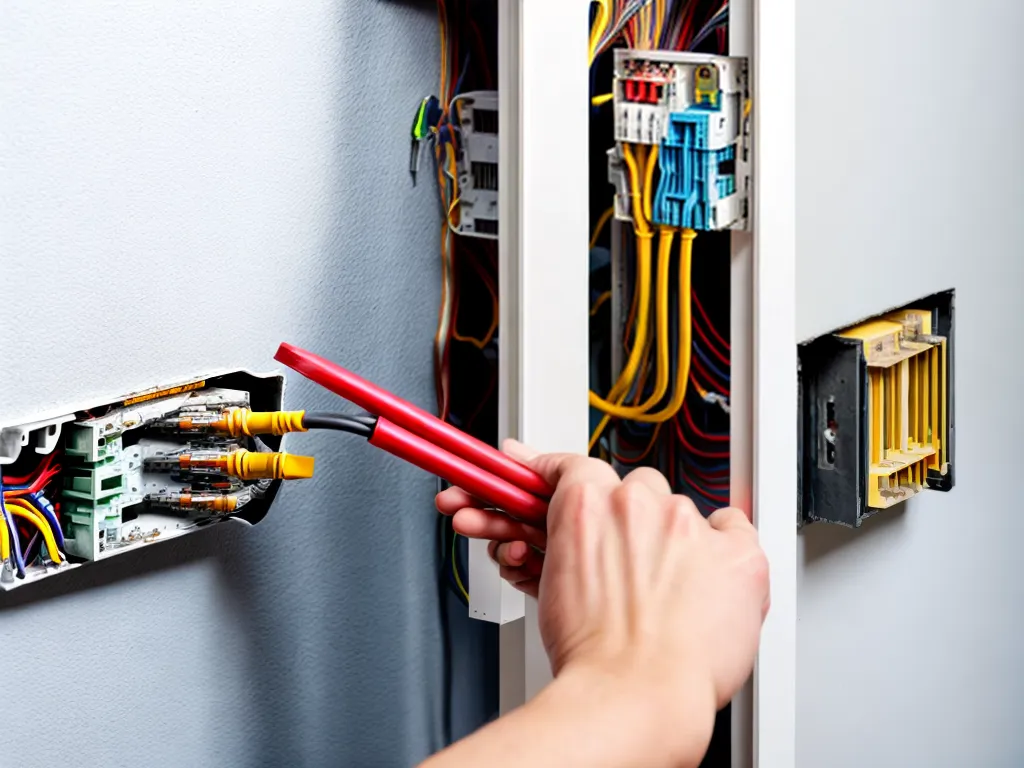
Aluminum wiring was commonly installed in homes built between 1965 and 1973. While aluminum is a good conductor of electricity, it expands and contracts more than copper. This can lead to connections becoming loose over time, which creates a fire hazard. Replacing aluminum wiring with copper wiring eliminates this risk. Here's how to do it safely and correctly.
Dangers of Aluminum Wiring
Aluminum wiring is more prone to oxidation and expansion/contraction issues than copper. This can lead to loose connections, overheating, arcing and fires. Aluminum wiring should always be inspected by a licensed electrician. Signs of trouble include:
- Frequent tripped circuit breakers or blown fuses
- Dimming lights or flickering lights
- Warm or discolored outlets and switches
- Burning or melting smells coming from outlets
If you have aluminum wiring, it's best to replace it with copper to avoid future hazards.
Preparation
Replacing wiring is complicated, time consuming and potentially dangerous. Here are some things to do in preparation:
- Hire a licensed electrician to do the work or oversee it
- Get all necessary permits from your local building department
- Have the electrician do a full inspection of the existing wiring and connections first
- Turn off power at the main circuit breaker before starting any work
- Buy all necessary copper wiring and supplies ahead of time
Replacing Wires
To replace aluminum wires with copper:
-
The electrician should turn off power at the main circuit breaker. Verify it's off by testing outlets with a multimeter before proceeding.
-
Open the electrical panel and remove the fuse or turn off the circuit breaker for the circuit being rewired.
-
At each connection point, use a wire stripper to remove about 1 in of the aluminum wire insulation. Clean the exposed aluminum thouroughly to remove all oxidation.
-
Apply oxidation inhibitor and corrosion control compound to the stripped aluminum wire. This prevents future oxidation.
-
Use a copper crimp connector or CO/ALR connector to connect the copper wire to the aluminum wire. This special connector is rated for copper-aluminum connections. Follow the product instructions carefully.
-
Secure the connection with the crimp connector. Apply force with the proper crimping tool to ensure a tight connection.
-
Test the connection by gently tugging on the wires. Wrap the connection with electrical tape.
-
Open outlets/switches and repeat the crimp connector process to connect the new copper wire to the existing device.
-
Return to the panel and refit the fuse or turn the breaker back on. Use a multimeter to test and verify power is running correctly.
-
Properly dispose of any removed aluminum wiring.
This process needs to be repeated for each wire that needs to be replaced. It's time consuming but necessary for safety.
Considerations
-
Only copper wire should be used for all final circuit wiring connections. Never leave any aluminum wire connections.
-
The entire circuit run needs to be rewired, not just certain sections.
-
All connections must be accessible. If any junction boxes get covered, problems could occur undetected.
-
Cloth-wrapped wiring found in very old homes presents extra risks. Consult an electrician about replacement in those cases.
Costs
-
The average cost to replace all the aluminum wiring in a 1,200 sq ft home is $2,500 to $5,000.
-
The cost can be over $10,000 for larger homes that have more aluminum wiring.
-
Get quotes from 3+ electricians to compare pricing.
-
While expensive, rewiring with copper is an important safety investment in your home.
Alternatives
If you can't afford full rewiring, alternatives like Alumiconn connectors can be used to connect copper and aluminum. However, best practice is to remove all the old aluminum wiring if possible. Some other alternatives include:
-
Pigtailing - attaching a short section of copper wire to the aluminum wire with a special connector.
-
Applying antioxidant paste - this reduces oxidation but doesn't address expansion/contraction.
-
Using arc-fault circuit interrupters (AFCIs) - these advanced circuit breakers detect dangerous arcing.
However, these don't fully eliminate the risks posed by aging aluminum wiring. Replacing the aluminum with copper wiring is the permanent solution.
Summary
-
Aluminum wiring can become a fire hazard as it ages. Replacing it with copper eliminates this risk.
-
Have a licensed electrician do the work or oversee it closely. Follow all permit and electrical codes.
-
The process involves connecting copper wires to existing wires using special connectors rated for copper and aluminum.
-
All accessible aluminum wiring must be replaced for safety. Just certain sections is not adequate.
-
Full rewiring of a home with copper wiring can cost $2,000 to $10,000+ depending on size.
-
While expensive, rewiring provides long-term safety and peace of mind by removing dangerous aluminum wiring.